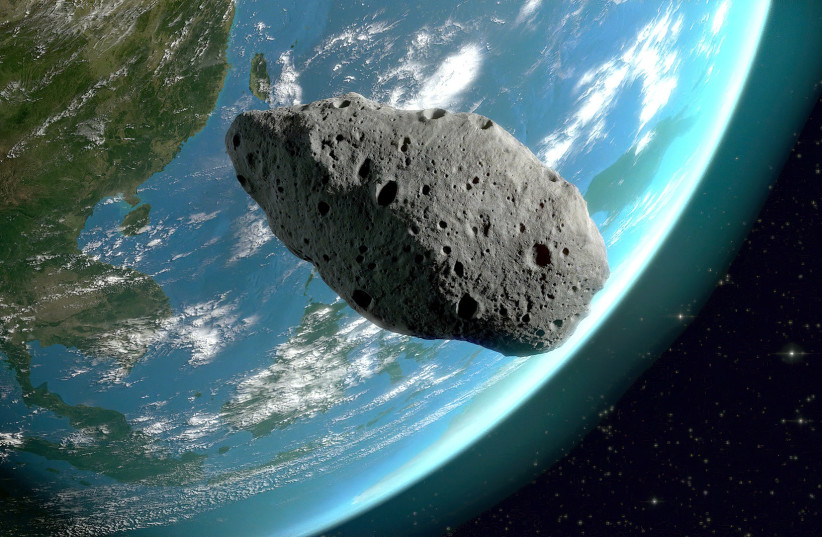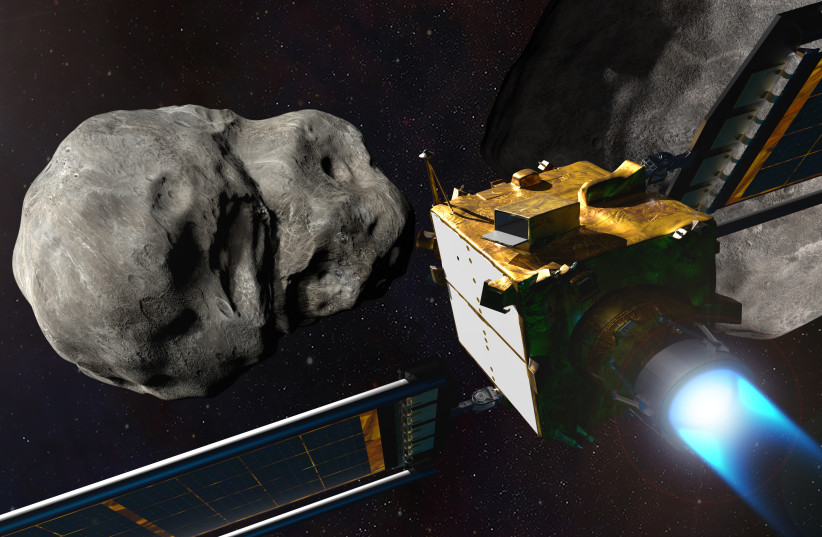A small supersonic asteroid flying at 10 times the speed of a bullet is set to pass the Earth on Tuesday, September 6, according to NASA's asteroid tracker.
<br>Which asteroid is coming towards Earth?
The asteroid in question has been designated 2022 QC7, according to the Center for Near-Earth Object Studies (CNEOS) at NASA's Jet Propulsion Laboratory (JPL), and it is relatively small.
<br>How big is the asteroid coming towards Earth in 2022?
Asteroid 2022 QC7 isn't too big, with a width ranging from just 16 meters to 36 meters, according to NASA.
For comparison, 36 meters is around half the wingspan of a Boeing 767 jet plane.

But asteroid 2022 QC7 is also coming in fast, barreling in Earth's direction at a speed of around 9.10 kilometers per second, or 32,760 kilometers per hour. To put that in perspective, that is about 10 times as fast as an average 5.56 x 45 mm NATO rifle bullet and is the equivalent of close to 27 times the speed of sound.
<br>Will an asteroid hit Earth in 2022?
NASA has made it clear that asteroid 2022 QC7 has essentially no chance of hitting the Earth, and is set to pass at a distance of over 4.6 million kilometers away.
Considering the Moon orbits the Earth at an average distance of 384,000 kilometers, this is much farther — albeit not too far on a cosmic scale.
However, even if asteroid 2022 QC7 did manage to hit the Earth, it wouldn't do much.
According to research from the Davidson Institute of Science, the educational arm of Israel's Weizmann Institute of Science, an asteroid 140 meters in diameter or more would release an amount of energy at least a thousand times greater than that released by the first atomic bomb if it impacted Earth.
An even larger asteroid that's over 300 meters wide – like the Apophis asteroid – could destroy an entire continent. An asteroid over a kilometer in width – like asteroid 138971 (2001 CB21), which flew past the Earth in early March 2022 – could trigger a worldwide cataclysm.
At its size, asteroid 2022 QC7 would, at best, cause a loud explosion upon atmospheric entry, but as for actual damage, it would be minimal, if any at all would even occur.
Back in March 2022, the asteroid 2022 EB5, a small asteroid around half the size of a giraffe, struck the Earth just hours after its discovery, resulting in no damage.
When is the next asteroid predicted to hit the Earth?
Not for a long time, at the very least. NASA has declared the Earth free of risk of any catastrophic asteroid impacts for the next century.
<br>What is the next asteroid to hit Earth?
Scientists don't know for sure, but there are a few candidates.
Currently, one of the most dangerous asteroids for Earth is the asteroid Bennu, an enormous 500-meter-wide asteroid. If this asteroid impacted the Earth, the result would be catastrophic - but as far as NASA is aware, this won't be for a long time, if ever.

Do we have any way to stop an asteroid from hitting the Earth?
Not yet, but scientists working on it.
The field of planetary defense is specifically organized to do things like that, and scientists at NASA and across the world are hard at work trying to keep the Earth safe.
Currently, the most promising of these efforts is NASA's Double Asteroid Redirection Test (DART) mission, which will see a small specially-designed spacecraft slam into an asteroid to see if it can possibly alter its orbit ever so slightly. But time will tell if this will prove effective.
The DART Mission is set to reach its target, the asteroid Dimorphous, on September 26.
